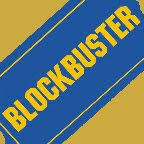
Someone asked a good question last week. Fredrick Nijm, co-founder and CEO of Addoway, mentioned that many companies, especially startups, sometimes see too many changes to adhere to a vision statement.
He's right to some extent. But before discussing why he is right, consider what Howard Schultz, president and CEO of Starbucks, discussed this week with NPR. As soon as he returned in 2008, he closed about 7,000 stores for several hours to retrain Starbucks employees.
Why? In Schultz's opinion, growth had given way to small changes that was driving Starbucks away from its vision. One example cited in the article related to how the company steamed milk. Size and scope had prompted stores to re-steam milk, which is more profitable and produced a higher yield. But it's also one off from the mission and vision of the company in terms of meeting its commitment to excellence.
"To establish Starbucks as the most recognized and respected brand in the world and become a national company with values and guiding principles that employees could be proud of.“ — Starbucks vision statement, 2008
 The vision was not perfect, given the first part is not necessarily achievable and the second is, arguably, already achieved. But incidentally, the company has been working toward developing a new vision. In the interim, it has mostly been operating on a mission to "inspire and nurture the human spirit - one person, one cup, and one neighborhood at a time."
The vision was not perfect, given the first part is not necessarily achievable and the second is, arguably, already achieved. But incidentally, the company has been working toward developing a new vision. In the interim, it has mostly been operating on a mission to "inspire and nurture the human spirit - one person, one cup, and one neighborhood at a time."What is interesting is that the mission has little resemblance to the one employed by Starbucks four years ago — "Establish Starbucks as the premier purveyor of the finest coffee in the world while maintaining our uncompromising principles while we grow." Both, I might note, weave in elements of the vision. And, you have to consider the various principles and values the company has adopted to appreciate the full scope of what Starbucks is trying to do.
This change no doubt plays into the logo change earlier this year. While the company received its fair share of criticism over the matter, the change of the mark wasn't made on a design whim. It was made because the company had already been changing its mission and vision in ways that included coffee but went well beyond the primary product.
How Do Startups Keep Pace With Change And Maintain A Vision?
To Nijm's point, vision statements are less about corralling a company and more about providing a bellwether (along with a mission and values) that the company can measure ideas against. Ergo, while reheating milk makes the company more profitable and speeds the process, it also fails in the face of the company's mission and vision.
Although Starbucks is a big company, this case study fits well within the biggest challenge small companies and startups face on a near daily basis. I'm working with one company right now (not even launched), which in staying true to its preliminary vision, decided to make manufacturing a core component of its operation as opposed to contracting the manufacturing and branding the product.
 In the short term, contracting out the manufacturing seemed like a good idea because it would reduce startup costs. However, in retrospect, the owner decided contracting out would compromise the quality. He is right. After all, many people know that the McDonald's of 30 years ago is not the McDonald's of today, which also required a vision change to keep pace with growth.
In the short term, contracting out the manufacturing seemed like a good idea because it would reduce startup costs. However, in retrospect, the owner decided contracting out would compromise the quality. He is right. After all, many people know that the McDonald's of 30 years ago is not the McDonald's of today, which also required a vision change to keep pace with growth. It was a defining moment for that company, for instance, to decide that growth and profitability was more important than purchasing a specific quality of beef. And therein lies how a well-defined mission, vision, and values are a bellwether.
Growth. Companies need to revisit their mission, vision, and values during growth spikes that clearly cause them to move away from their foundation. (When growth or profitability take precedence, a company like McDonald's may de-emphasize quality. And lately, the company is being forced toward health consciousness.)
Acquisition. When companies purchase other companies, they need to determine whether the acquisition can adjust to the parent company or if the subsidiary can reasonably act autonomously with its existing mission. (This has been the Achilles of Yahoo since its beginning, buying up companies that were poor matches and attempting to make them yield.)
Shift. When companies take on new niche products or services, sometimes those products or services slowly begin to dominate the initial scope of a company. (For example, I recently worked on an account to rebrand a mold remediation company that grew into an environmental demolition and construction company.)
Era. Not all products and services are timeless, especially in the medical and technology industries. Consider all the industries that are struggling — print publications, auto manufacturers, etc. — and you'll recognize what happens when companies begin to believe they publish newspapers instead of journalism or work in autos as opposed to transportation. Or perhaps the better example is how the March of Dimes transitioned from ending polio to benefiting premature babies.
Exploratory. Small business owners and startups are often given opportunities well outside their scope of service or expertise. The existing vision can easily help them decide whether or not the opportunity is worth changing their direction. Or, they may operate in a temporary exploratory mindset, provided they understand that they will have to adopt some permanence.
Weakness. Or, as mentioned in the original article, companies might consider their vision when it's already failing for one reason or another. Perhaps it is because they hired people who never embraced the original vision or perhaps it is incredibly weak and not transformative. Either way, companies without an adopted vision tend to have various departments and individual people who could be working against each other or in different directions (whether they know it or not).
The short answer for small companies and startups on when they might change their mission, vision, and values is at a major event. However, the better answer is to weigh every operation and decision against the vision to begin with. If those decision makers did that, chances are that there would be fewer sweeping changes as they developed.
But then again, that may even be the difference between a company vs. an enterprise or an organization vs. an initiative. While both usually have some direction, one doesn't necessarily have any end in sight, which is probably why most enterprises and initiatives eventually end.














































